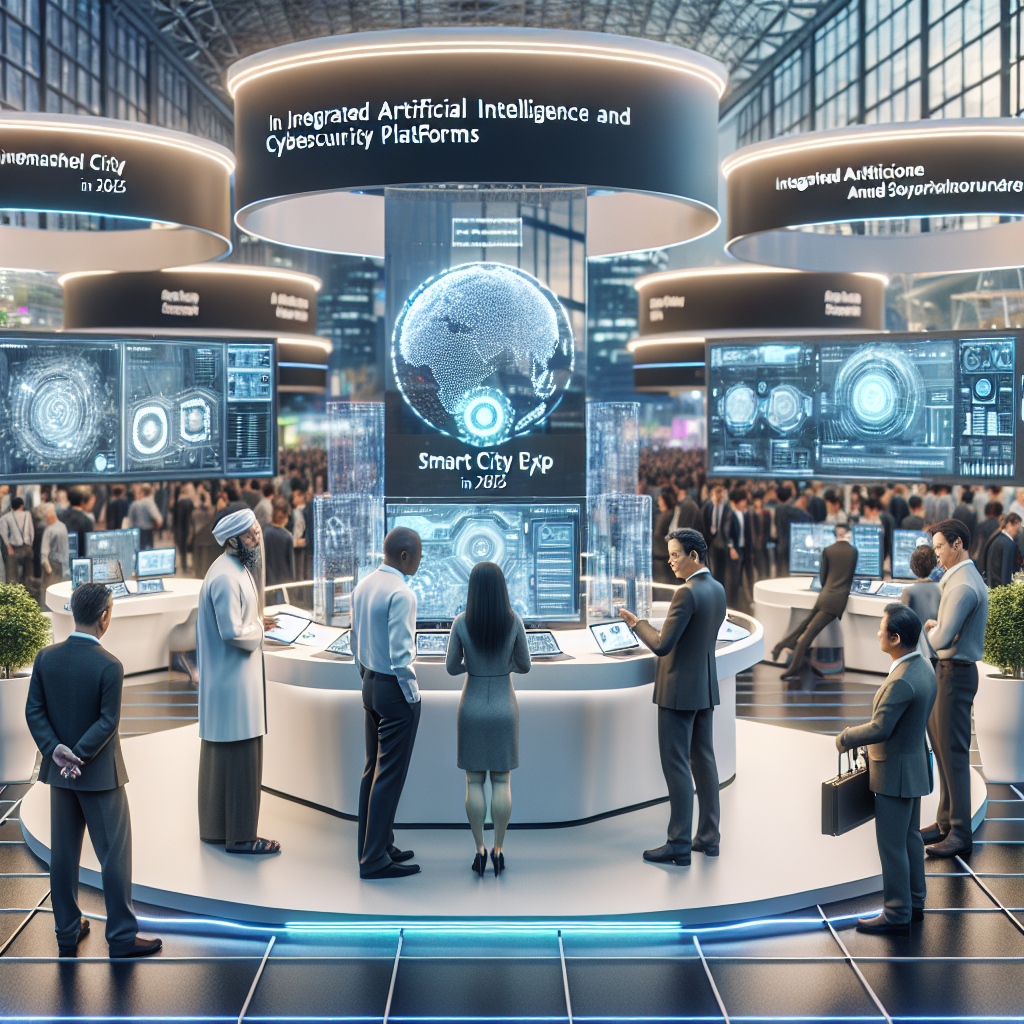-
Hostinger’s AI agent redefines client support, saves over €9 million a year

In a striking advancement in customer service technology, Hostinger has revolutionized its AI chat assistant, Kodee, leading to significant savings and enhanced customer satisfaction. As of September 12, 2025, this cutting-edge agent is credited with saving the company over €9 million annually in operational costs, a feat achieved by automating routine client interactions.
The transformation of Kodee is not just a superficial upgrade; it marks a crucial evolution from a simple Q&A tool to an intelligent agent capable of executing real tasks. Where Kodee once provided answers, it now undertakes entire processes for clients. This includes critical activities such as website migration, optimizing website speed, and implementing security measures, all done seamlessly with simple instructions from users. Giedrius Zakaitis, Hostinger’s Chief Product and Technology Officer, described this transition as pivotal, stating, “The results speak for themselves.”
At its core, Kodee’s newly enhanced capabilities boast an impressive achievement: fully resolving 75% of conversations without the need for human intervention. In August alone, the AI engaged in 750,000 conversations, a jump from the previously recorded resolution rate of 50% at the beginning of the year. Notably, when Kodee is allowed to take action, both customer satisfaction and resolution rates see an uptick of approximately 4% compared to cases where it only provides information.
Streamlining Client Support
Hostinger’s primary objective revolves around providing rapid and efficient client support. The company has set a benchmark to respond to all inquiries within two minutes, a goal made more attainable through Kodee’s innovative approach. Unlike human specialists, who can only handle a set number of inquiries at any time, Kodee manages unlimited conversations simultaneously, drastically reducing response times.
With Kodee’s improvements, the average time clients wait for help has plummeted to a mere 9 seconds, down from 28 seconds just a year prior. This extraordinary reduction means that 93% of all support requests are now resolved in under 2 minutes, a significant rise from the previous year’s 77% resolution rate.
Navigating Unprecedented Growth
The necessity to adapt has never been clearer as Hostinger’s customer inquiries have doubled in volume over the last four years. Reflecting on 2025 alone, the platform observed almost as many inquiries within eight months as it did throughout all of 2024. This surge correlates with Hostinger’s growing customer base, now exceeding 4 million, coupled with Kodee’s expanding suite of capabilities that allow users to efficiently address their needs.
Against this backdrop of increasing demand, the company has strategically reduced its customer success teams by 20%, resulting in a total of 312 specialists. Zakaitis reassured that those roles weren’t lost to AI but that staff members were reassigned to more complex roles, thus putting their skills to better use, while Kodee tackled repetitive tasks.
The Individual Touch with AI
A notable aspect of Kodee’s functionality is its ability to communicate in over 50 languages, catering to a diverse and global clientele. This multilingual capability ensures that clients can receive assistance in their native tongues, further enriching the customer experience. Hostinger’s commitment to maintaining a high-quality support experience is clear, as they balance intelligent automation with human expertise.
As companies increasingly invest in AI technologies, Hostinger’s experience highlights a potent example of how artificial intelligence can enhance, rather than replace, human roles in customer service. By automating routine inquiries, Kodee frees up valuable time for specialists to focus on resolving complex issues, ultimately leading to improved service delivery.
In conclusion, Hostinger’s Kodee exemplifies the transformative potential of AI in business. Through substantial cost savings, improved response times, and increased customer satisfaction, Kodee showcases the future of client support — one where cutting-edge technology and human ingenuity work hand in hand.
-
Could AI nursing robots help healthcare staffing shortages? | CNN Business

The global healthcare sector is currently grappling with a staggering shortage of labor, projected to reach a deficit of 4.5 million nurses by 2030, according to the World Health Organization (WHO). This shortage has created immense pressure on the existing workforce, with approximately one-third of nurses worldwide suffering from symptoms of burnout, including emotional exhaustion. The situation is dire, exacerbated by a historically high turnover rate within the nursing profession. However, emerging technology, particularly autonomous AI-powered robots like Nurabot, is presenting a potentially transformative solution to this crisis.
Developed by Foxconn, the multinational technology giant from Taiwan, Nurabot is an innovative nursing assistant designed to alleviate the burden on nurses by handling repetitive and physically demanding tasks. These may include activities such as medication delivery and guiding patients throughout the hospital facilities. Foxconn claims that as nurses integrate Nurabot into their workflow, they could potentially reduce their workload by as much as 30%. As Alice Lin, the director of user design at Foxconn, explains, “This is not a replacement of nurses, but more like accomplishing a mission together.” This collaborative approach aims to enhance the quality of patient care by allowing nurses to focus on more critical tasks that require human judgment and expertise.
Nurabot is currently being tested at the Taichung Veterans General Hospital in Taiwan and has been in development for just 10 months following its initial design. Testing began back in April 2025, and Foxconn is gearing up for a commercial launch anticipated at the beginning of next year. Although the company has not released pricing details yet, the implications of this technology could be monumental in addressing staffing shortages in healthcare facilities worldwide.
At the heart of Nurabot’s design is a collaboration between Foxconn and Kawasaki Heavy Industries, a well-known Japanese robotics firm. The advantages of this partnership are evident in Nurabot’s autonomous wheel movements and the ability to perform tasks with its robotic arms. To better suit the context of nursing, Foxconn conducted extensive research to identify the specific challenges nurses face in their daily routines, such as traversing long distances to deliver samples. As a result, Nurabot includes a compartment specifically designed for safely delivering medication and other important supplies between the nurses’ station and patient rooms.
The AI technology powering Nurabot stems from a combination of resources, including Foxconn’s own Chinese large language model for communication functionalities and cutting-edge AI infrastructure provided by NVIDIA. The American tech giant played an essential role in developing Nurabot’s core programming, employing a mixture of proprietary AI platforms that enable the robot to navigate hospital environments independently, as well as schedule tasks and respond to both verbal and physical cues of human staff.
Moreover, AI training and testing were conducted using a virtual environment representative of the hospital, significantly accelerating the development process. The advancements in artificial intelligence have allowed Nurabot to operate with a greater degree of autonomy and human-like behavior, enabling it to perceive, reason, and react adaptively to varying situations within a healthcare setting. David Niewolny, director of business development for health care and medical at NVIDIA, emphasizes that such capabilities allow Nurabot to adjust its actions based on specific patient conditions and contextual needs.
As Nurabot moves closer to its market launch, the pivotal question remains: will AI nursing robots like Nurabot serve as a help or hindrance in the healthcare landscape? While the technology promises to streamline operations and alleviate some of the burdens on human staff, concerns about the implications of increased automation could arise. Thus, industry leaders and stakeholders must closely observe not only the potential efficiencies created by technologies like Nurabot but also the ethical considerations and impacts on nursing professionals.
In summary, as the nursing profession faces unprecedented challenges, the development and integration of AI-powered solutions like Nurabot represent a significant step towards addressing the pressing issue of staffing shortages. As we move forward into an era where technology plays an increasingly prominent role in healthcare delivery, understanding the collaboration between AI and human professionals will be crucial in shaping a more effective and efficient healthcare system.
-
AMA releases CPT 2026 code set, adds codes for health AI

The American Medical Association (AMA) has recently unveiled the 2026 update to the Current Procedural Terminology (CPT) code set, introducing significant advancements that will enhance the documentation of technology-enabled healthcare services. This comprehensive update includes 418 changes, comprising 288 new codes, 84 deletions, and 46 revisions designed to reflect the growing intersection of healthcare and technology.
A standout feature of this update is the introduction of numerous codes specifically aimed at documenting digital health services. Among these updates, healthcare providers will now be able to accurately record shorter duration remote patient monitoring, specifically for periods lasting from two to 15 days within a 30-day timeframe. This adjustment allows for more nuanced tracking of patient care and remote monitoring management through two new codes that will outline services based on just 10 minutes of monitoring per calendar month.
Moreover, the 2026 CPT code set includes groundbreaking codes for health AI services that are designed to augment physician capabilities while improving patient care. Notably, the codes for AI-assisted assessments will cover innovative applications like the evaluation of coronary atherosclerotic plaque and perivascular fat analysis for cardiac risk assessments. These developments exemplify how the medical field is increasingly integrating artificial intelligence to enhance diagnostic accuracy and patient outcomes.
In addition to these innovations, the AMA has recognized the need for codes that support emerging digital technologies, specifically targeting services linked to multi-spectral imaging for burn wounds and tools for the detection of cardiac dysfunction. These efforts indicate a clear acknowledgment of the evolving landscape of healthcare and the significant role that advanced technology plays in patient management and treatment solutions.
The updated code set also includes 12 new codes related to hearing device services, which encompass training and support for patients utilizing personal devices to connect with their hearing aids. This addition establishes a more holistic understanding of patient engagement and care continuity through the integration of supportive technology.
Effective January 1, 2026, the new Category I CPT codes will be crucial for medical professionals as they navigate claims processes and reimbursements, especially under programs like Medicare. The uniform language of the CPT code set is essential for standardizing medical documentation across the healthcare system, ensuring that services are accurately captured and reimbursed. This structured approach is vital not only for patient care but also for the financial sustainability of healthcare practices.
However, recent statements from the Centers for Medicare & Medicaid Services (CMS) reveal a shift in their methodology regarding how they utilize CPT codes in determining the Medicare Physician Fee Schedule. CMS has expressed concerns about the reliance on the Relative Value Scale Update Committee (RUC), citing issues related to potential biases in the survey data collected for setting payment rates. This shift may impact how healthcare professionals approach the documentation and coding for services moving forward.
The introduction of AI-related CPT codes in this update signals the AMA’s proactive stance on the integration of technology in healthcare, ensuring that such innovations are formally recognized within the coding framework. This not only helps in streamlining the documentation process but also paves the way for reimbursement structures that fairly reflect the value of AI-enhanced medical services. As the healthcare sector continues to embrace advanced technologies, staying informed about coding changes will be paramount for physicians, practices, and organizations aiming to leverage innovations for improved patient care.
-
‘Brain-like’ AI uses Chinese chips to run 100 times faster on ultra-long tasks

A groundbreaking development has emerged from China: a visionary team has unveiled what it is touting as the world’s first “brain-like” large language model, a significant leap in artificial intelligence technology. Developed by researchers at the Chinese Academy of Sciences’ Institute of Automation in Beijing, this innovative system, named SpikingBrain 1.0, is designed to operate with reduced energy consumption while achieving superior performance without relying on Nvidia chips.
The concept behind SpikingBrain 1.0 is rooted in mimicking the natural mechanisms of the human brain. Unlike conventional AI models, which activate extensive neural networks continuously, this revolutionary model selectively engages only the necessary neurons in response to specific inputs. This selective activation significantly saves power and accelerates response times, enabling the model to handle tasks with remarkable efficiency.
One of the most impressive claims surrounding SpikingBrain 1.0 is its ability to learn from a fraction of the training data traditionally necessary for similar systems, utilizing less than 2% of what mainstream AI models require. This efficiency is particularly evident when processing extensive texts, where SpikingBrain 1.0 reportedly operates up to 100 times faster than its conventional counterparts, as indicated by a non-peer-reviewed technical paper posted on arXiv, an open-access research repository.
Moreover, SpikingBrain 1.0 functions entirely within China’s domestic AI ecosystem, leveraging the MetaX chip platform instead of the widely used Nvidia GPU hardware. This development is of strategic significance, especially as the United States enforces tighter export controls on advanced AI chips, positioning this technology as a key player in the global AI landscape.
Li Guoqi, a lead researcher at the Institute of Automation, highlighted that this model represents a new frontier for AI development, specifically optimized for Chinese chips. He outlined the potential applications of SpikingBrain 1.0 to process extensive data sequences, such as legal documents, medical records, and scientific simulations, effectively signaling its versatility and relevance across multiple sectors.
In a bid to promote further exploration and use of this technology, Li’s team has open-sourced a smaller version of the model and made a more substantial version available online for public testing. On its demo site, the system introduces itself: “Hello! I’m SpikingBrain 1.0, or ‘Shunxi’, a brain-inspired AI model. I combine the way the human brain processes information with a spiking computation method, aiming to deliver powerful, reliable, and energy-efficient AI services entirely built on Chinese technology.”
In contrast to the prevalent AI models today, which often demand immense computing resources, SpikingBrain 1.0 unveils an energy-efficient alternative for model training and application. Companies typically lean on vast data centers filled with high-performance chips, leading to significant electricity and cooling expenses. Even after the initial training phase, these models continue to consume substantial resources, particularly during tasks that require extensive input or complicated responses.
SpikingBrain 1.0’s innovative approach diverges from this traditional methodology. By drawing on the selective processing capabilities of real neurons, this system doesn’t attempt to process every aspect of information simultaneously. Instead, it responds to provocations, yielding less power consumption while maintaining the ability to manage complex assignments, ultimately paralleling the effectiveness of human cognitive processes.
A remarkable feature of this AI model is its core technology known as “spiking computation,” which mirrors the brain’s tendency to send rapid bursts of signals only when stimulated. This event-driven mechanism inhibits unnecessary activation, allowing SpikingBrain 1.0 to remain quiet during inactive periods—reinforcing its energy efficiency and operational economy.
To substantiate their theories, the developmental team has created two iterations of SpikingBrain 1.0: one encompasses 7 billion parameters, while its larger version consists of 76 billion parameters. While the final stages of the research documentation are awaited, this ambitious project heralds an exciting advancement in AI technology that is anticipated to have far-reaching implications.
-
RSS co-creator launches new protocol for AI data licensing | TechCrunch

In an era where artificial intelligence is rapidly evolving, the issue of data licensing has become a hot topic. With significant cases pending in the AI landscape, including high-profile lawsuits involving major companies, a solution is critically needed. Enter Real Simple Licensing (RSL), a groundbreaking protocol launched by a coalition of web publishers and technologists, including Eckart Walther, one of the co-creators of the RSS standard.
The AI industry is facing an unprecedented challenge regarding the use of training data. Following Anthropic’s staggering $1.5 billion copyright settlement, organizations are increasingly aware of the potential for copyright lawsuits that could endanger innovation and advancement in AI. RSL aims to set a framework that ensures legal clarity and protects the rights of data providers while allowing AI creators to utilize content responsibly.
RSL is positioned as a significant advancement in the quest for a scalable and effective data licensing system. Backed by major web publishers such as Reddit, Quora, and Yahoo, the ambition is clear: facilitate agreements that meet the needs of both AI companies and content creators. This document outlines how RSL may operate at scale to foster a cooperative environment where both parties can thrive without the fear of legal repercussions.
At the heart of the Real Simple Licensing initiative is a technical framework designed to make licensing straightforward and machine-readable. By assimilating licensing terms within a website’s ‘robots.txt’ file, publishers can specify the conditions under which others can use their data. This method simplifies the complex web of licensing agreements, making it easier for AI firms to understand their obligations.
Legal infrastructure is just as vital to RSL’s framework. The establishment of the RSL Collective serves as a backbone for navigating licensing agreements and royalty collections. Comparable to ASCAP’s role in the music industry, the Collective provides a singular point of contact for managing multiple licensing agreements, thus alleviating potential confusion and ensuring that data providers are fairly compensated.
Numerous well-known entities have joined the RSL Collective, signaling a significant momentum behind this initiative. Publishers such as Yahoo, Medium, and The Daily Beast have signed on, contributing to a diverse array of content sources that can participate in the RSL ecosystem. Even as others choose to support the standard without joining the collective, the potential to standardize data licensing across the internet could reshape how AI companies approach data sourcing.
The implementation of RSL poses an essential question: will it be sufficient to foster buy-in from large AI companies? Engagement from major players in the AI field is critical if the protocol is to fulfill its promise. Walther emphasizes the growing urgency for clear, machine-readable licensing agreements, stating, “We need to have machine-readable licensing agreements for the internet. That’s really what RSL solves.” This impetus underscores the importance of creating a viable and fair system for all interested parties.
As the conversation surrounding AI data usage continues to evolve, RSL not only exemplifies a leading approach to data licensing but offers a much-needed template for future developments in AI governance. If successful, it could serve as a blueprint for other industries grappling with similar issues of copyright and content ownership.
This protocol highlights a pivotal moment for both the tech industry and data providers. There is a powerful incentive to develop standardized systems that protect intellectual property while simultaneously facilitating innovation in AI. As technology leaders converge at events like TechCrunch Disrupt 2025, discussions around initiatives like RSL serve to enrich the dialogue on balancing innovation with ethical and legal accountability in technology.
As the impending avalanche of copyright lawsuits looms, RSL shines as a beacon of hope for the future of data licensing in the AI space. Now, the industry awaits to see if this ambitious initiative will unite disparate stakeholders and provide the clarity needed to weather potential legal storms.
-
Streaml Launches AI-Powered End-to-End Sales Automation

In a significant move for the B2B sales and marketing landscape, Streaml has introduced an AI-driven Sales Development Representative (SDR) platform that could redefine how companies manage their sales workflows. Launched on September 09, 2025, in Nashville, TN, this innovative platform promises to streamline sales processes by managing sourcing, outreach, follow-up, and meeting scheduling all within a single intelligent system.
The impetus for the creation of Streaml stems from the frustrations of its founders, who recognized the limitations of outdated and fragmented sales development processes. By consolidating these once-disparate workflows into one cohesive solution, Streaml not only reduces operational costs but also enhances overall efficiency. The platform seeks to free up time for sales teams, allowing them to focus on high-value strategies and relationship building, which are crucial for sustained growth in a competitive marketplace.
In a statement from the founding team, they emphasized that “with Streaml, you don’t need a $100K agency contract. We handle everything—LinkedIn, email, SMS, social—so your team can spend time where it matters most: closing deals.” This approach targets a significant pain point for many companies, particularly those struggling to balance comprehensive outreach with the demands of nurturing leads into customers.
Streaml sets itself apart not just by being an all-in-one solution but through its key differentiators that enhance its appeal to businesses. Notably, its full-funnel coverage takes users from the initial contact through to signed contracts, making outreach and engagement seamless across the entire customer journey.
In addition to this streamlined approach, Streaml leverages proprietary datasets that extend beyond LinkedIn. With millions of high-quality leads at its disposal, the platform broadens a company’s reach and significantly improves targeting accuracy. This expansion into diverse industries allows for a customizable approach that can be tailored to a variety of business models and needs.
Moreover, one of the standout features of Streaml is its reliance on intelligent execution through AI agents. These agents prioritize and engage high-value prospects, which not only reduces the manual workload for teams but also sharply accelerates sales cycles. The reduction in administrative tasks means that sales personnel can invest their efforts where they truly matter: building relationships and converting leads into paying customers.
Streaml’s focus on cost efficiency is another crucial element that positions it well in the market. By consolidating the functionality of multiple tools and significantly reducing the need for external agencies, Streaml provides the equivalent value of a traditional $100K+ sales agency, but at a fraction of the cost. This budget-friendly option makes it especially attractive for small to mid-sized businesses looking to optimize their sales operations without exorbitant expenditures.
The initial results from companies adopting Streaml’s platform are promising. Firms across a range of sectors, including private equity, venture capital, recruiting, and B2B tech sales, have begun to see tangible improvements in their growth trajectories. For instance, the platform has been instrumental in onboarding researchers from multimodal dataset companies and CEOs of enterprise firms, accelerating early-stage traction and customer acquisition.
In the manufacturing and logistics sector, Streaml has successfully captured millions in B2B shipping and fulfillment deals by identifying eCommerce businesses actively searching for reliable shipping and fulfillment partners. By using advanced data analytics and AI reasoning, Streaml’s impact resonates clearly across industries, leading to increased sales efficiency and better alignment of resources with market demands.
Overall, Streaml is not just another sales tool; it’s a comprehensive solution designed to meet the challenges of modern B2B sales and marketing head-on. As companies continue to navigate the digital landscape, platforms like Streaml that offer seamless integration, cost savings, and intelligent automation will likely become essential for achieving long-term success.
-
Nuclearn gets $10.5M to help the nuclear industry embrace AI

The nuclear power industry, often viewed through the lens of safety and stringent regulations, is beginning to embrace the transformative potential of artificial intelligence (AI). Nuclearn, a startup founded by Bradley Fox and Jerrold Vincent, recently secured $10.5 million in Series A funding, indicating strong investor confidence in the integration of AI into traditional nuclear operations. With participation from firms like Blue Bear Capital and Nucleation Capital, this investment is set to facilitate the development and deployment of AI tools across nuclear facilities worldwide.
Founded with a focus on enhancing operational efficiency, Nuclearn is already making waves by utilizing AI to optimize tasks in over 65 nuclear reactors globally. Fox’s initial experiences at the Palo Verde Nuclear Generating Station served as a fertile ground for the development of state-of-the-art AI solutions designed specifically for the nuances of the nuclear industry. What began as exploratory work has blossomed into a demand-driven service, with other reactors reaching out to replicate Palo Verde’s success.
The interest in AI from the nuclear sector isn’t merely a trend but a significant shift towards modernization. While completely autonomous reactors remain a distant vision due to safety and regulatory constraints, the application of AI for streamlining business processes has garnered attention. Fox states that the nuclear industry is ready to leverage AI to enhance productivity, yet critical responsibilities remain firmly in human hands. Regulatory frameworks delineate AI’s role as a complementary tool rather than a replacement for human oversight.
Nuclearn’s software specializes in generating routine documentation—a fundamental requirement in the nuclear field—while empowering reactor employees to verify and finalize outputs. This dual approach minimizes the bureaucratic burden often associated with regulatory compliance. Moreover, Nuclearn’s adaptive AI models can be trained to align with specific operational terminology, further enhancing their utility within individual power plants.
The onset of the COVID-19 pandemic catalyzed Fox and Vincent’s startup journey, transforming idle time into an opportunity to innovate. Their collaborative efforts have culminated in a robust platform that not only addresses existing inefficiencies but also aligns with the nuclear industry’s current digital transformation efforts. As interest in maintaining a competitive edge in the energy sector grows, Nuclearn’s tailored solutions present a compelling proposition for power providers aiming to harness AI’s capabilities.
One of the standout features of Nuclearn’s offering is the dual deployment option. While the software operates primarily in the cloud, it is also adaptable to on-site installations for facilities that prioritize stringent security measures. This flexibility speaks to the diverse needs of the nuclear industry and highlights the importance of developing scalable solutions to ensure ubiquitous adoption.
The potential for AI to revolutionize the nuclear sector is immense, yet the journey is fraught with challenges. Current nuclear regulations limit how much automation can be implemented, as the Nuclear Regulatory Commission categorizes AI as a tool, akin to utilizing software like Excel or Mathematica. Thus, reactor operators may dictate their level of automation based on operational thresholds, ensuring that human oversight remains a priority.
As Nuclearn fine-tunes its technology, the future would ideally see a hybrid ecosystem where AI tools enhance decision-making and efficiency without sacrificing the stringent safety protocols that define nuclear energy. Moreover, successful implementation of AI across the industry could translate into significant advancements in other high-stakes sectors, representing a broader trend where automation complements human expertise.
Nuclearn’s journey is just starting, but with strategic funding and a clear vision for the future, this startup is positioned to make a lasting impact on the nuclear industry. Business leaders, investors, and stakeholders keen to explore the implications of AI in regulated sectors will find Nuclearn’s achievements especially relevant as the conversation around digital transformation continues to evolve.
-
Light-powered chip makes AI 100 times more efficient

In an era where artificial intelligence (AI) is at the forefront of technological evolution, efficiency and sustainability have become paramount concerns. AI systems are not only integral to various applications such as facial recognition and language translation, but their growing complexity comes with significant energy demands. Researchers at the University of Florida have taken a monumental step towards alleviating this issue by developing a groundbreaking chip that leverages light instead of electricity to execute one of the most energy-intensive tasks in AI.
This innovative chip, as detailed in the research published in Advanced Photonics, is engineered to perform convolution operations, which are critical for machine learning models to identify patterns across images, text, and video. Traditionally, these convolutions have required hefty computational power, resulting in high energy consumption. By embedding optical components directly onto a silicon substrate, the team has pioneered a system that employs laser light and microscopic lenses in place of conventional electronic processing, significantly slashing both energy consumption and processing time.
Volker J. Sorger, the study’s lead and an esteemed Professor in Semiconductor Photonics at the University of Florida, affirmed the breakthrough: “Performing a key machine learning computation at near zero energy is a leap forward for future AI systems. This is critical to keep scaling up AI capabilities in years to come.” Such a paradigm shift not only highlights the technological advancements being made but also aligns perfectly with the growing need for eco-friendly computing solutions.
The prototype chip has shown impressive performance, classifying handwritten digits with approximately 98 percent accuracy — an efficiency level on par with traditional electronic chips. This was achieved through the utilization of two sets of miniaturized Fresnel lenses, engineered with precision using standard semiconductor manufacturing methods. These lenses, remarkably thinner than a human hair, are directly etched onto the chip, facilitating the efficient conversion and manipulation of laser light.
The operational process begins with the conversion of machine learning data into laser light, which then transverses through the Fresnel lenses to conduct the necessary mathematical operations. The outcome is converted back into a digital signal, completing the AI task with remarkable precision and speed. Hangbo Yang, a research associate professor involved in the study, emphasized this pioneering effort: “This is the first time anyone has put this type of optical computation on a chip and applied it to an AI neural network.” The research marks a significant milestone in the intersection of optics and artificial intelligence.
Additionally, the team successfully demonstrated the chip’s ability to handle multiple data streams concurrently through a technique known as wavelength multiplexing. This allows for different colors of laser light to pass through the lens system simultaneously, exemplifying the immense potential of photonics in enhancing computational efficiency. Yang noted, “We can have multiple wavelengths, or colors, of light passing through the lens at the same time. That’s a key advantage of photonics.” Such capabilities not only promise substantial advancements in speed but also open new avenues for processing large datasets more efficiently.
This research was a collaborative effort alongside the Florida Semiconductor Institute, UCLA, and George Washington University, signaling a collective push towards the next frontier of AI technology. Sorger’s insights on the industry further suggest that companies like NVIDIA, which are already incorporating optical elements into certain AI systems, may find integrating this novel technology seamless.
As the landscape of AI continues to evolve, Sorger’s vision is clear: “In the near future, chip-based optics will become a key part of every AI chip we use daily. And optical AI computing is next.” With such advancements paving the way for a more energy-efficient approach to AI, this light-powered chip could redefine the standards for future AI architectures — balancing the demand for power with the urgent need for sustainability.
-
VCI Global Showcases Integrated AI and Cybersecurity Platforms at Smart City Expo KL 2025

KUALA LUMPUR, Malaysia – VCI Global Limited, a trailblazer in cross-sector platform development, is poised to make waves at the upcoming Smart City Expo Kuala Lumpur (SCEKL25) taking place from September 17 to 19, 2025. The expo, a significant gathering for city innovation and digital transformation in Southeast Asia, serves as an ideal platform for VCI to showcase its cutting-edge technologies aimed at transforming urban ecosystems securely and efficiently.
VCI Global has crafted a suite of integrated solutions tailored for diverse stakeholders, including governments, enterprises, and city operators. At SCEKL25, attendees can expect to see innovations such as the Smart City Security Infrastructure, which acts as a foundational digital backbone enabling secure and AI-ready urban ecosystems.
One standout product in the portfolio is the V Gallant CyberSecure. This military-grade cybersecurity solution promises automated instant recovery, making it especially appealing to organizations looking to bolster their defense mechanisms against digital threats. Early adopters can take advantage of an exclusive 50% launch discount, making it an attractive option for municipalities grappling with tight budgets.
Another remarkable offering is V Gallant DeepAI, an AI model training platform designed for scalability and efficiency. With this solution, institutional and municipal clients can accelerate their AI initiatives without compromising on performance or security. Moreover, V Gallant SecureGPU provides hardware-based encryption technologies that safeguard enterprise AI workloads, ensuring sensitive data remains protected, even in the most challenging of environments.
Complementing these are the QuantGold QsecureCam, an AI-driven surveillance system equipped with real-time monitoring features and uncompromising data protection measures. These innovations collectively create a robust smart city security framework, deftly merging cutting-edge AI and cybersecurity to instill confidence among city collectors and stakeholders in tech adoption efforts.
The significance of this technological convergence cannot be overstated, especially as cities worldwide grapple with the demands of increasingly interconnected urban environments. The need for scalable AI systems fortified with top-notch cybersecurity measures is on the rise. Research indicates that the smart cities economy is projected to soar beyond US$1.04 trillion by 2025, driven by a compound annual growth rate (CAGR) of 29.4% through 2030. As municipalities across the globe strive to integrate smart technologies, VCI Global’s solutions present a timely answer to their challenges.
Dr. Chan Wai Mun, Chief AI & Data Officer at VCI Global, will take center stage as a thought leader at the expo. He is slated to deliver a solo keynote presentation spotlighting the ever-narrowing intersection of AI, cybersecurity, and infrastructure. Additionally, Dr. Mun will participate in a strategic panel discussion which aims to dissect the future trajectory of connected cities and how innovation in technology can catalyze their growth.
As the emergence of predominantly urban lifestyles continues to shape global demographics, the focus on smart city solutions becomes increasingly vital. VCI Global’s offerings promise to address pressing security and ethical challenges while enhancing the overall efficacy of urban operations. The smart city solutions presented by VCI at SCEKL25 are not just technological advancements; they embody a forward-thinking ethos that aligns with the pressing demands of modern urban governance.
Wrapping up, VCI Global’s showcase at the Smart City Expo KL 2025 heralds a pivotal moment in the convergence of AI and cybersecurity, emphasizing the need for integrated approaches in navigating the complexities of urban digital transformation. With the backing of robust market forecasts indicating rapid growth in both the smart cities and cybersecurity domains, VCI Global is well-positioned to be a leader in this transformative journey.
-
Koah raises $5M to bring ads into AI apps

In a rapidly evolving landscape of artificial intelligence applications, the startup Koah has emerged with an innovative approach to monetizing AI products. Recently raising $5 million in seed funding, Koah is charting a course that integrates advertising into AI apps. This move not only signifies a shift in how developers think about revenue generation but also reveals the growing importance of user engagement within AI environments.
As AI becomes increasingly prevalent in everyday applications, developers face the ongoing challenge of monetizing their solutions effectively. Traditional business models often struggle to keep pace with the fast innovations that define the AI sector. Many startups find themselves in a quandary: how do you provide value to your users while also generating sustainable income? Koah’s approach attempts to solve this dilemma by tapping into the familiar yet sometimes contentious world of advertising.
The emergence of advertisements within AI applications might initially evoke a mixed response from users. After all, many consumers are increasingly wary of intrusive advertising in their digital experiences. However, the goal of Koah’s strategy is to seamlessly integrate ads, enhancing rather than detracting from the user experience. This nuanced approach could appeal to both consumers who appreciate free services and developers seeking valuable monetization pathways.
Koah’s model aims to offer targeted advertisements that are contextually relevant to users’ interactions with AI applications. By leveraging advanced algorithms and data analytics, the startup believes they can tailor ads to match user behavior and preferences. The key challenge will be to maintain a balance that doesn’t overwhelm or alienate users.
Notably, the $5 million seed funding indicates significant investor confidence in Koah’s vision. This capital will likely be used to further develop its technology, enhance its platform, and explore partnerships with other businesses. As Koah refines its approach, the company may set a precedent for other AI startups attempting to navigate the same monetization challenges.
This is particularly pertinent as various industries look to harness AI for productivity improvements, customer engagement, and data analysis. By successfully integrating ads into AI applications, Koah could open new revenue streams not just for itself but for a myriad of app developers in the AI ecosystem.
Furthermore, the timing of this funding and announcement highlights an ongoing trend where ad revenues are gaining traction in non-traditional venues, especially amidst rapid digital transformations. Thus, there is a growing confidence in the sentiment that ads can coexist with user-friendly AI technology.
Moreover, discussions surrounding ad integration are not merely theoretical. If executed correctly, such strategies can drive user interaction and satisfaction—essential components of successful tech solutions. The potential for scaling this monetization model across different verticals marks a natural progression in the business strategies of AI application developers.
The results of Koah’s approach will be keenly observed as their journey unfolds. Will users embrace this model, or will there be backlash against the intrusion of ads into AI-powered tools? Answers to these questions could have profound implications not only for Koah but for the larger ecosystem of AI startups that are on the brink of financial sustainability.
As we move into a future where AI applications are likely to serve an even broader array of functions, innovative monetization strategies like Koah’s will be essential to fostering a thriving environment where both developers and consumers can benefit. The success of advertising within AI apps may well set the tone for future business models in this fertile and rapidly maturing space.
In conclusion, Koah’s initiative to incorporate advertising into AI applications may not only reshape how startups approach monetization but also represent a shift in user expectations. The arrival of this concept could signify the dawn of a new era where strategic ad placements coalesce with immersive AI experiences, thereby enhancing engagement while maximizing revenue potential.
